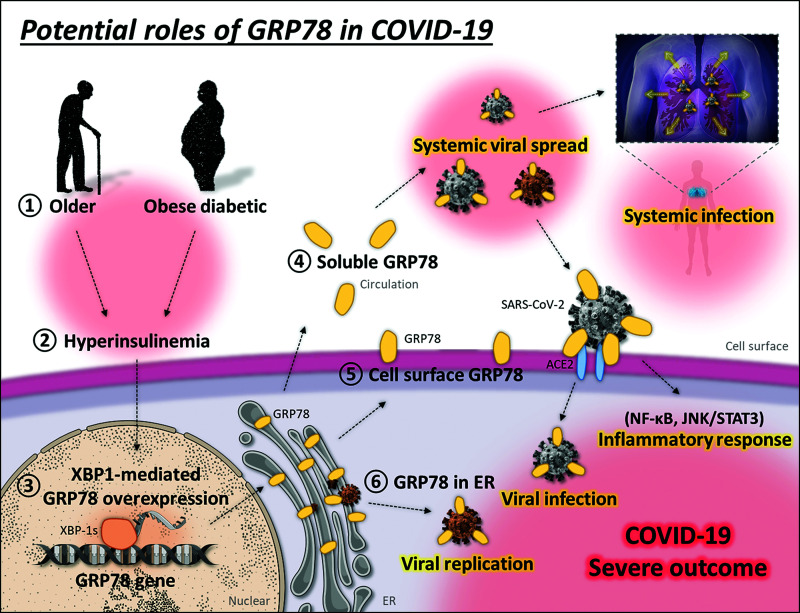Figure 5.
Potential roles of GRP78 in COVID-19. In patients with older age, obesity, and diabetes (1), hyperinsulinemia (2) causes cellular stress and induces the XBP-1-mediated overexpression of GRP78 (3) in adipose tissue, which promotes the localization of GRP78 to the circulation (4) and cell surface (5), not only to ER (6). GRP78 physically interacts with SARS-CoV-2 spike protein, which might play a number of crucial roles in the viral lifecycle. The interaction of the spike protein with soluble and cell surface GRP78 might facilitate the binding and infection of SARS-CoV-2 to ACE2-expressing host cells. Soluble GRP78 attached to SARS-CoV-2 in circulation possibly induces the systemic viral spread and infection. Binding of SARS-CoV-2 to cell surface GRP78 or the related stimuli could activate the NF-κB or JNK/STAT3 transcriptional pathway and induce cellular inflammatory responses. SARS-CoV-2 potentially exploits ER-located GRP78 as a molecular chaperone to produce and assemble viral particles, which enables successful viral replication (brown-colored virus indicates newly replicated SARS-CoV-2). The high expression of GRP78 in patients with older age, obesity, and diabetes may contribute to the severe progression and outcome of COVID-19.

